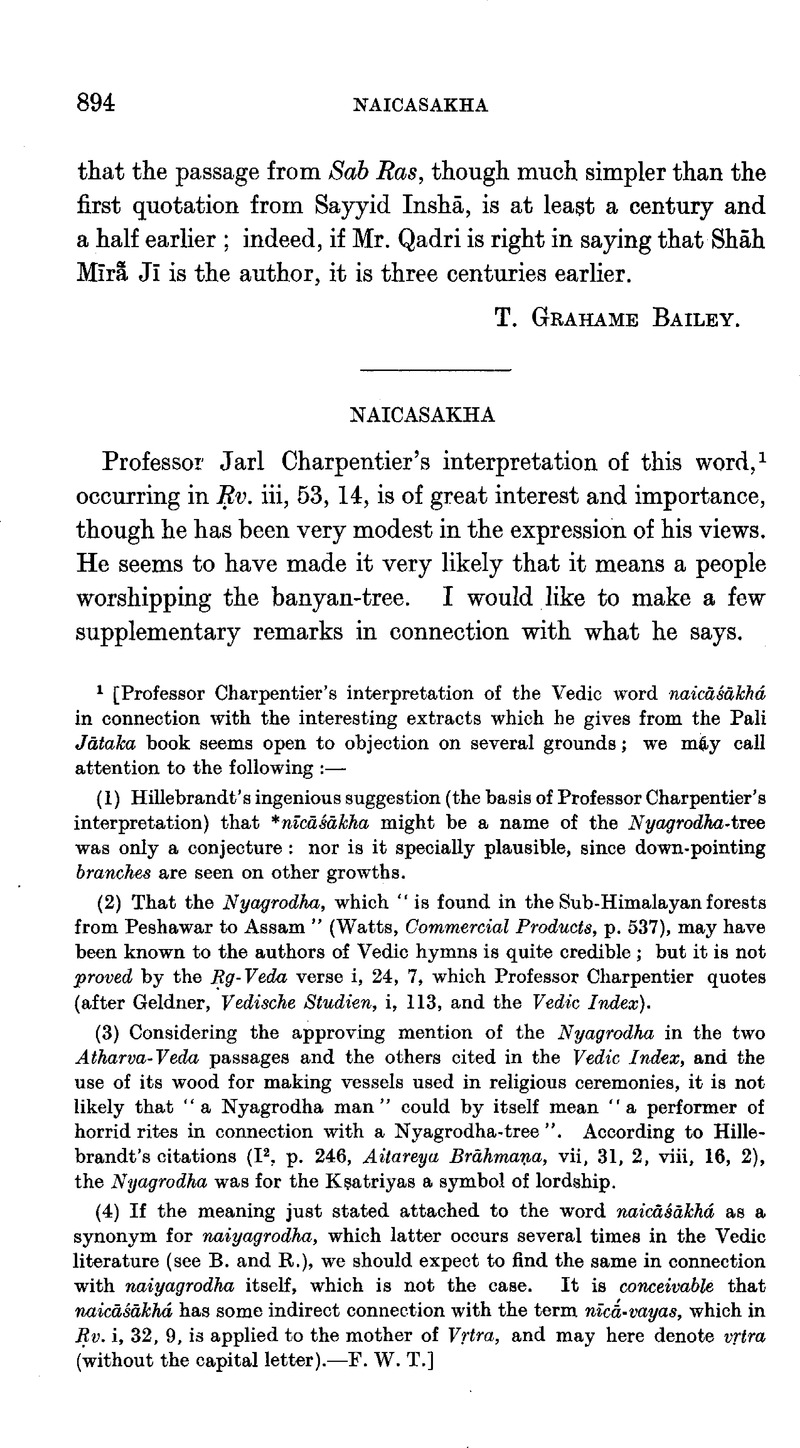No CrossRef data available.

Page 894 note 1 [Professor Charpentier's interpretation of the Vedic word naicāśākhá in connection with the interesting extracts which he gives from the Pali Jātaka book seems open to objection on several grounds; we may call attention to the following:—
(1) Hillebrandt's ingenious suggestion (the basis of Professor Charpentier's interpretation) that *nīcāśākha might be a name of the Nyagrodha-tree was only a conjecture: nor is it specially plausible, since down-pointing branches are seen on other growths.
(2) That the Nyagrodha, which “is found in the Sub-Himalayan forests from Peshawar to Assam ” (Watts, , Commercial Products, p. 537)Google Scholar, may have been known to the authors of Vedic hymns is quite credible; but it is not proved by the Ṛg-Veda verse i, 24, 7, which Professor Charpentier quotes (after Geldner, , Vedische Studien, i, 113Google Scholar, and the Vedic Index).
(3) Considering the approving mention of the Nyagrodha in the two Atharva-Veda passages and the others cited in the Vedic Index, and the use of its wood for making vessels used in religious ceremonies, it is not likely that “a Nyagrodha man” could by itself mean “a performer of horrid rites in connection with a Nyagrodha-tree”. According to Hillebrandt's citations (I2, p. 246, Aitareya Brāhmana, vii, 31, 2, viii, 16, 2), the Nyagrodha was for the Kṣatriyas a symbol of lordship.
(4) If the meaning just stated attached to the word naicāśakhá as a synonym for naiyagrodha, which latter occurs several times in the Vedie literature (see B. and R.), we should expect to find the same in connection with naiyagrodha itself, which is not the case. It is conceivable that naicāsakhá has some indirect connection with the term nīcā-vayas, which in Ṛv. i, 32, 9, is applied to the mother of Vṛtra, and may here denote vṛtra (without the capital letter).—F. W. T.]
Page 896 note 1 For some of the views advanced above about Viśvāmitra and the Bharatas see my “Identification of the Ṛgvedic River Sárasvatī and some Connected Problems”, pts. iii and iv (Journal of the Department of Letters, Calcutta University, vol. xv).
page 897 note 1 That various Indo-European tribes have been known to worship trees or tree-spirits proves nothing for primitive I.-E. times or even for the Indo-Aryans of the Ṛgvedic times. These cults seem to have been borrowed from various non-Aryan peoples in the course of their later wanderings. The Scandinavians even learnt the terrible sacrificing of human beings on trees for Odin (see Chadwick, , The Cult of Othin, pp. 14–20)Google Scholar, which Charpentier thinks repelled the author of Ṛv. iii, 53, 14.